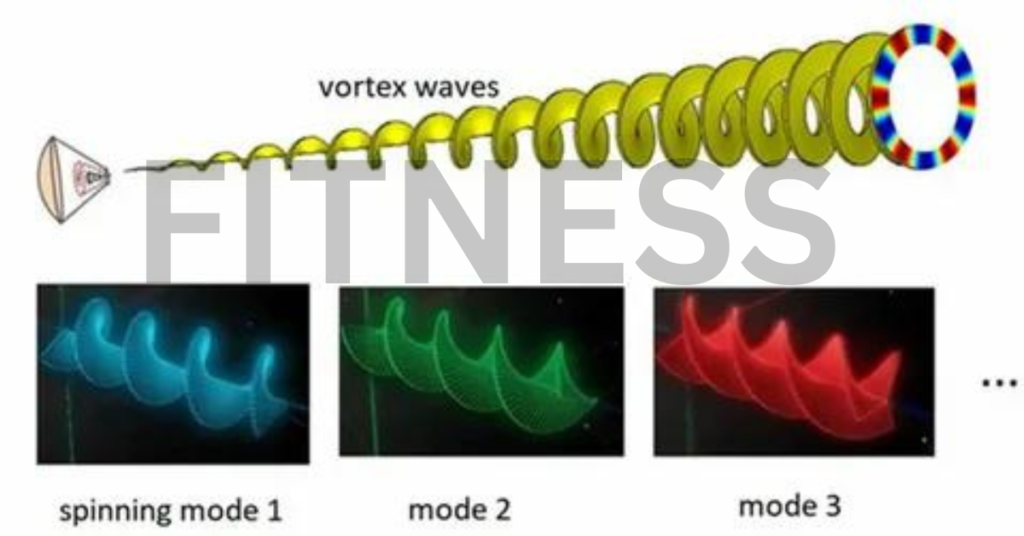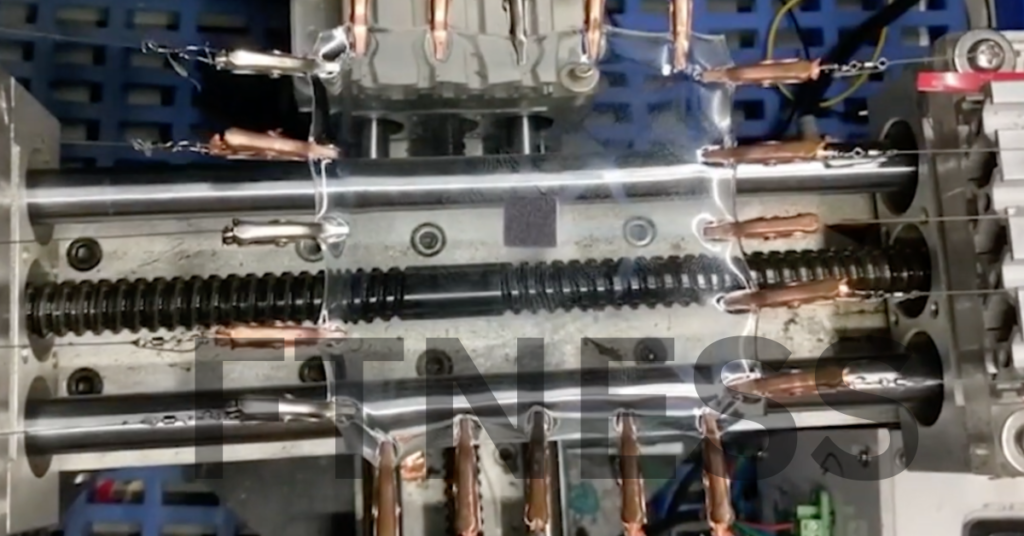Receiving Waves with Straight and Flexible Wire Configurations, When it comes to telecommunications and signal receiving,
how well waves are receive is very important. One interesting direction in this field is using straight so bendable lines to pick up waves. People often forget about these lines so but they have interesting qualities and abilities that should be look into. This piece goes over the basics of wave travel and the role of antennas. It then focuses on how and why straight so flexible lines might help with wave receiving. By figuring out how they work and what they can be use for so we open up a new and exciting area of wave reception technology.
Fundamentals of Wave Propagation
Waves are all around us in nature and they come in many forms, such as sound, light, and electric waves. It is important to understand the basics of wave travel in order to understand how messages are sent and receive.
Properties of Waves
Waves have many important qualities, such as their range so frequency or amplitude and speed of travel. How waves behave as they move through different materials is based on these qualities.
Wave Behavior in Different Media
Waves can behave very differently when they hit different materials. Waves move and interact with a material based on its mass or flexibility and warmth so among other things. For example, electromagnetic waves can bend so bounce or scatter as they pass through different types of dense objects.
Modes of Wave Propagation
Waves can move through different materials in different ways so such as by reflecting, refracting, diffracting, or interfering. Each mode has a very important effect on how messages are sent and receive.
Transmission of Electromagnetic Waves
When it comes to messaging so electromagnetic waves are very important. Electric and magnetic fields that are moving make up these waves so
which move through space at the speed of light. Understanding how they send information is essential for making communication tools that work well.
Impact of Environmental Factors
Things in the environment so like geography so weather and objects, can have a big effect on how waves travel. For instance or radio waves may lose strength or broadcast quality when they go through thick plants or buildings.
Principles of Antenna Design
As the link between electromagnetic waves in space and electrical data in transmission devices so antennas are very important. To get the best wave coverage or you need to understand the basic ideas behind antenna design.
Function of Antennas
Electromagnetic waves can be sent and receive easily with the help of antennas. For sending so they change electricity data into electromagnetic waves and for receiving so they do the opposite. How well a transmission system works is directly related to how well an antenna works.
Key Parameters in Antenna Design
A lot of factors affect how antennas are made and how well they work. Some of these are impedance matching, radiation pattern so antenna gain and frequency. Each of the parameters is very important for figuring out how well the antenna sends or receives messages.
Types of Antennas
There are many forms and sizes of antennas and each one is design for a specific purpose and frequency range. Dipole antennas, patch antennas so Yagi-Uda antennas, and parabola antennas are some of the most common types. Each kind has its own qualities and can be use in different situations.
Design Considerations
When designing a good antenna so you need to think carefully about things like the working frequency so the radiation pattern you want so
the surroundings and the amount of room you have. Engineers have to find the best antenna settings to get the performance numbers they want while also taking into account what is actually possible.
Antenna Materials and Construction
What elements are use and how they are built have a big effect on how well and how long an antenna works. When making antennas, it’s best to use materials that are highly conductive so
have a low loss vector and don’t react badly to external factors.
Simulation and Optimization Tools
Computer-aided design (CAD) software and electromagnetic modeling tools have change the way antennas are designed in big ways. Engineers use these tools to make models of antenna shapes
so guess how well they will work and make designs that meet specific needs.
Applications of Antennas
A lot of different fields use antennas so
such as television or telephones so radar systems or remote sensing and satellite communications. Because they are so useful and flexible, they are essential to current information methods.
Understanding Straight Flexible Wires
Straight bendable lines are a new way to receive waves
that has benefits and possibilities that are not available with traditional antenna designs. By looking into their qualities and how they work, we can learn a lot about their possible uses and limits.
Properties and Characteristics of Flexible Wires
Straight flexible wires are usually made of highly conducting
materials like copper or aluminum and have a flexible insulation wrap around them. Because they are flexible so they can be easily manipulate and installed in different ways so which makes them useful for a wide range of situations. In addition so their long or thin shape makes it possible for them to efficiently receive electromagnetic waves with a wide frequency range.
Advantages of Using Flexible Wires for Wave Reception
One of the best things about using straight bendable lines
instead of standard antennas is that they are easier to use and cost less. The small size and low weight of these chips make them good for uses where weight and room are limited so like handheld devices or integrate systems. In addition so their adaptability makes it easy to put them in awkward or limit areas so which increases the number of places where waves can be receive.
Limitations of Straight Flexible Wires
Straight bendable wires have benefits so but they also have some problems that you need to think about. Their small size and simple design may make them
less efficient and have a smaller spread than antennas with more complicated designs. They may also not work as well in some situations because they are easily affect by things in their surroundings so like disturbance and signal loss.
Wave Reception Mechanism of Straight Flexible Wires
It is possible for straight so bendable lines to pick up electromagnetic waves. This is call electromagnetic induction. Faraday’s law of electromagnetic induction says that when a wire is expose to an electromagnetic field so it makes a voltage
equal to the rate of change of the magnetic flux going through it. After that so this generated energy can be taken out and use as a warning in different situations.

Factors Affecting Reception Efficiency
Straight, bendable lines’ ability to receive waves depends on a number of things, such as their length, thickness so direction in relation to the wave,
and the electromagnetic world around them. It is very important to optimize these settings in order to get the best coverage and the least amount of disturbance or signal loss.
Wave Reception Mechanism of Straight Flexible Wires
It is important to understand how straight, flexible lines receive waves in order to make transmission systems work better. Understanding how straight flexible wires pick up waves and the things that affect how well they work is what this part is all about.
Electromagnetic Induction
Electromagnetic induction is the main way that waves can reach straight so flexible wires. If you put a conductor so like a straight wire or near a
changing magnetic field or Faraday’s law of electromagnetic induction says that an EMF will be cause along the wire. The rate of change of this produced voltage is equal to the magnetic flux going through the wire.
Interaction with Incident Waves
When electromagnetic waves travel through
space and hit a straight, bendable wire, they create a magnetic field around the wire that changes over time. Along the length of the line, this changing magnetic field makes an EMF, which makes electricity move. The information in the incident waves is carried by these generate currents, which can be taken out and use for more processing.
Length and Orientation of the Wire
How well the wave is pick up depends a lot on how long
the straight so bendable wire is and how it is position in relation to the wave. Induced voltages are higher when longer lines are use because they can catch more of the wave’s energy. The size of the produce EMF is also affect by how the wire is position in relation to the wave’s polarization. For best receiving, the wire should be line up parallel to the wave’s electric field.
Frequency Response and Bandwidth
Straight bendable wires’ frequency response and bandwidth
depend on a number of things, such as their length, thickness, and the qualities of the material they are made of. A bigger bandwidth, or range of frequencies that can be receive, is usually found in longer lines. On the other hand, the thickness of the wire also affects its frequency response. Thinner lines are better at picking up higher frequencies.
Environmental Factors
Things in the environment, like close objects, electromagnetic interference,
and signal loss, can affect how well straight flexible lines receive signals. Other electrical devices or radiation sources could mess up the signal being receive, which would lower the level of communication. Signal loss from distance or barriers can also weaken the receive signal, so it’s important to be careful about where and how the wires are place.
Design Considerations
When designing straight, bendable lines for best wave receiving,
many things need to be carefully thought through to make sure they work well, are reliable, and are efficient. This part talks about the most important design factors
that need to be taken into account to make straight, flexible lines work best for getting waves.
Length and Diameter Optimization
The straight bendable wire’s length and thickness are two important factors that directly affect how well it works for receiving. When waves hit longer lines, they pick up more of their energy, which makes the generated volts higher. But the wire’s frequency reaction and sensitivity to different bands are also affect by how big it is. To get the best coverage across the require frequency range, these factors must be balance.
Material Selection
The material used to make the straight flexible
wire has a big effect on how well it conducts electricity, how flexible it is, and how long it lasts. For the best coverage, materials that carry electricity very well, like copper or metal, are recommend. Also, the shielding material for the wire should be chosen so that it protects well against external factors while still being flexible enough to be easily install and manipulate.
Orientation and Placement
How the straight bendable wire is position and oriented
in relation to the wave that is coming in is very important for getting the best reception. When the wire is line up parallel to the wave’s electric field polarity, the generate voltage and receiving work better. To keep signal loss and noise to a minimum, you should also carefully consider where the wire is place in relation to nearby objects and electromagnetic interference sources.
Impedance Matching
Making sure that the straight bendable wire and
the receiving circuits have the same resistance is important for getting the most power transfer and the least amount of signal loss. Impedance mismatch can cause waves to bounce and receiving to be less effective. To get the best impedance matching and the best receiving performance, methods like impedance matching networks or baleens can be use.
Environmental Factors
Environmental factors like changes in temperature, wetness,
and mechanical stress can affect how well and how long straight flexible lines work. It is important to choose materials and finishes that won’t break down in different environments to make sure they work well in all kinds of situations. To keep the lines from getting mechanically damage, the right pressure reduction and attachment methods should also be use.
Interference Mitigation
Getting rid of electromagnetic interference (EMI) from outside sources is important to keep the signal’s purity and lower the noise in wave receiving. EMI can be less of a problem if you use shielding methods like twisted pair wire or coaxial lines. Filtering and signal processing techniques can also be use to get rid of clutter and improve the signal-to-noise ratio.
Techniques for Enhancing Wave Reception Using Flexible Wires
When using straight, bendable lines for wave receiving,
it’s often necessary to use certain methods and strategies to get the best results. In this part, we’ll look at some creative design and engineering methods that can be use to improve wave receiving.
Optimized Wire Configurations
Trying out different wire designs, like different lengths, sizes,
and arrangements, can help you find the best setups for different frequency ranges and uses. Making predictions about how different wire
setups will work and choosing the best design factors can be helpe by using computer simulations and models.
Multi-Wire Arrays
Using groups of straight, bendable lines can improve receiving
by making the general area where arriving waves can be capture bigger. Engineers can improve signal receiving variety and lessen the effects of signal fading or interference by placing multiple lines in parallel or perpendicular directions.
Directional Reception Techniques
Straight flexible lines can be more selective in where
they work by using directional receiving methods like directive antennas or phased array setups. Engineers can improve signal-to-noise ratio and block annoying input from other directions by focusing receiver sensitivity in certain angles or directions.
Frequency Selective Surfaces (FSS)
If you build frequency selective surfaces into straight bendable lines,
you can screen incoming waves based on the frequency bands they belong to. Engineers can change the wire’s reception properties to work with certain frequency bands by adding FSS elements along its length. This blocks out unwanted signals and improves receiving efficiency.
Active Amplification and Signal Processing
Adding active enhancement circuits and signal processing
techniques to the receiver system can make the weak signals sent by straight, flexible lines stronger. Before they are process further, low-noise boosters and signal conditioning circuits can boost and increase the signals that are receive. This makes it easier to identify and better balances the signal with noise.
Adaptive Tuning and Optimization
By using adaptable tuning and optimization techniques,
the parameters of straight flexible wire configurations can be change on the fly in reaction to changes in the signal or the surroundings. Engineers can keep reception working at its best in a variety of settings by constantly checking how well it’s working and changing the way the wires are set up to match.
Integration with Advanced Technologies
Using new developments in materials science, nanotechnology,
and metamaterials can open up new ways to improve wave receiving with flexible, straight lines. Using new materials with special electromagnetic qualities in the wire design can make it work and perform at levels that have never been seen before. This can lead to new uses for communication systems.
Practical Applications of Straight Flexible Wires in Wave Reception
There are many useful uses for straight, bendable lines in areas where good wave detection is important. This part talks about the different ways that straight flexible wires can be use, showing how flexible they are and how well they work to solve communication problems.
Wireless Communication Systems
In wireless communication systems, flexible straight lines are often use as receiving elements in antennas for things like smartphones, Wi-Fi routers,
and Internet of Things (IoT) monitors. Because they are small and flexible, they can be easily built into movable and limit-space devices, making it possible to communicate reliably in a variety of settings.
Radio Frequency Identification (RFID) Systems
RFID systems use electromagnetic waves to send and receive data and identify objects. RFID receivers use straight, flexible lines as reception elements. This lets them find and follow tagged items in many situations, such as in asset tracking,
inventory management, and access control systems.
Remote Sensing and Monitoring
In remote sensing and tracking, straight, flexible lines are use as receiving elements in sensor arrays to gather information about the surroundings,
like temperature, humidity, and weather. Their mobility and freedom make it possible to use them in hard or faraway places, making it easier to collect real-time data for tracking and scientific study.
Wireless Sensor Networks (WSNs)
Sensors placed in different places and linked to each other are what make up a WSN. They receive data from their surroundings and keep an eye on them. As receiving elements in sensor nodes, straight, flexible lines are use to pick up and send sensor data wirelessly. This makes it possible for uses like smart farming, watching the environment, and automating factories.
Medical Devices and Wearable Technology
Straight, bendable lines are use as receiving elements in biosensors and health tracking devices in medical devices and wearable tech. Because they are biocompatible and flexible, they can be put into wearable tech that checks vital signs so finds bodily factors,
and lets doctors keep an eye on patients from afar.
Aerospace and Defense Systems
Straight, bendable lines are use in antennas for transmission, radar, and electronic warfare in aircraft and defense systems. Due to their small size and ability to be modifi, they are perfect for being built into airplanes,
spaceships, and military vehicles. This makes it possible to communicate and spy on difficult environments.
Automotive Electronics
A lot of different kinds of straight so bendable wires are use in antennas for car communication systems like GPS tracking, cellphone connection,
and communication between vehicles. Because they are well-made and don’t break easily under mechanical stress, they can be use in car uses to provide stable communication and access while driving.
Current Challenges in Utilizing Straight Flexible Wires for Wave Reception
There are some problems with using straight bendable lines for wave receiving, even though they are useful and flexible. This part talks about the problems that
come up when trying to use straight, flexible lines to their full potential in wave receiving technology.
Bandwidth Limitations
One of the biggest problems with straight bendable lines is that they have a limited capacity. Because they are physically and mechanically simple,
straight bendable lines may not have as much bandwidth as antennas with more complicated designs. Because of this limitation, they might not work well in situations that need broad detection or action across multiple frequency bands.
Signal Interference and Noise
It is possible for signal disturbance and noise from outside sources to
affect the performance and dependability of straight bendable lines. Nearby electronics, power lines, or other wireless systems can cause electromagnetic interference (EMI), which can mess up messages and make contact less reliable. Getting rid of confusion and noise is still one of the biggest problems when it comes to making straight flexible lines work better for receiving waves.
Environmental Variability
Environmental factors like changes in temperature, humidity, and mechanical stress can have an effect on how well straight flexible lines work for receiving waves. Depending on the weather, the wire’s physical and electrical features may change, which can cause transmission quality and dependability to fluctuate. An important task is to make straight bendable wire systems that can work consistently in a wide range of weather situations.
Integration Complexity
Putting straight, flexible lines into electronics and communication systems could be hard when it comes to mechanical integration, data processing and making the best use of the system. To get the best coverage, the lines need to be align, orient and placed in the right way. This takes careful engineering and design considerations. Adding signal processing methods and optimization techniques to improve receiver performance also makes designing and putting the system into action more difficult.
Miniaturization and Form Factor Constraints
Getting straight bendable wire-base reception systems smaller can be hard in situations where room and form factor are very important. Innovative design methods and improve manufacturing techniques are need to make small so movable devices that can receive waves well while still keeping the integrity and efficiency of the wire configurations. Researchers are still working on ways to make straight flexible wire systems smaller, which is a problem that needs to be solve.
Emerging Technologies and Trends
As new technologies and trends come out, the field of wave detection technology is always changing, especially when it comes to straight flexible lines. This part talks about the newest developments and plans for the future that will affect how straight flexible lines are use for wave receiving.
Advancements in Materials Science
As materials science keeps getting better, new materials are being made that have unique electric qualities, conductivity, and flexibility. By making the transmission better, lowering the signal loss, and making the dynamic qualities better, these materials might make straight flexible wires better at receiving waves.

Metamaterials and Metasurfaces
Metamaterials and metasurfaces give us a level of control over electromagnetic waves that has never been seen before. This means that buildings can be made with specific electromagnetic qualities. Adding metamaterial-based parts to straight bendable wire systems can improve wave handling, such as turning, narrowing, and filtering, which opens up new ways to use waves for advanced purposes.
Nanotechnology and Microfabrication
Nanotechnology and microfabrication methods are making it possible to make wave receiver systems that are very small and highly integrated. These systems use straight, flexible lines. Scientists can use nanoscale materials and manufacturing methods to make small, effective receivers that can work across a wide frequency range and have better sensitivity and dependability.
Flexible Electronics and Wearable Devices
Flexible technology and wearable tech are becoming more popular, which is pushing researchers to find new materials and ways to make things that are flexible and bendable. Straight flexible lines will be very important in these uses because they are key parts of portable antennas, health tracking systems, and sensor networks. They will also make it easy to add these technologies to clothes and items that people wear.
5G and Beyond
As 5G wireless networks are put in place and new wireless communication standards are being work on, there is a greater need for new wave detection technologies that can handle faster data rates, less delay, and more connections. Straight, flexible lines could help improve wave detection in 5G and beyond, making it easier for people to communicate in next-generation wireless networks.
Artificial Intelligence and Signal Processing
New developments in artificial intelligence (AI) and signal processing methods are changing the way waves are receive by making it possible to intelligently find signals, improve them, and control them in ways that are best for them. Adding AI-powered methods to straight, flexible wire-based reception systems can improve reception, reduce disturbance, and instantly adapt to new external conditions.
Conclusion
Using straight, flexible lines for wave detection is a new and exciting area of transmission technology that could be use in many ways and is simple so flexible and effective. This part goes over the main points that were talk about in the piece and stresses how important straight, flexible lines are for progressing wave detection technology.
Recap of Key Points
Since the beginning of this piece, we’ve looked at the basics of wave propagation, antenna design, and how straight, flexible wires can receive waves. It’s been talked about the pros, cons, and design issues of using straight flexible lines for wave detection, as well as how they can be use in real life in various fields.
Importance of Straight Flexible Wires
Straight flexible lines have special benefits, such as being easy to use, inexpensive, and bendable, which makes them perfect for a wide range of communication problems. They are useful parts of modern communication systems because they can receive waves well in a variety of settings and because materials science, nanotechnology, and signal processing have come a long way.
Future Directions and Opportunities
Looking ahead, the future of wave receiver technology looks bright for how straight, flexible lines will continue to change and be used in next-generation communication systems. New technologies like metamaterials, flexible circuits, and artificial intelligence are expect to make straight flexible wire-based communication systems even better in what they can do and how well they work.
FAQs
What are straight flexible wires, and how do they differ from traditional antennas.
Straight flexible wires are long electrical elements cover in a flexible shielding material. They are easy to use, flexible, and adaptable in wave receiving uses. Traditional antennas often have complicated shapes and designs. Straight flexible lines, on the other hand, are a cheap and light way to receive electromagnetic waves.
What advantages do straight flexible wires offer in wave reception technology.
Straight flexible wires have many benefits, such as being easy to use, inexpensive, and flexible in how they are design and put together. Their small size and light weight make them perfect for use in travel electronics, electronics that you wear, and places with limited room. Also, because they are flexible, they are easy to put and change in a variety of situations.
What are the key challenges associated with utilizing straight flexible wires for wave reception.
Although straight bendable lines have many benefits, they also have some problems, such as limited bandwidth, signal confusion and noise issues, changes in the surroundings, difficulty in integration, and size restrictions. To solve these problems, you need new ways of designing things, better materials, and better ways to process signals.
How can straight flexible wires be optimized for wave reception efficiency.
Straight bendable wires can be made better by changing things like their length, thickness, the material they are made of, and their direction in relation to the wave that is hitting them. Using multi-wire arrangements, directed reception, frequency selective surfaces, active amplification, adaptable tuning, and combining with new technologies can also improve the performance and dependability of receiving.
What are the emerging trends and future directions in straight flexible wire-based wave reception technology.
New developments in materials science, metamaterials, nanotechnology, bendable electronics, 5G wireless communication, AI, and signal processing are some of the new trends. These technologies have the potential to give wave receiver systems new features and functions. This could lead to new ways of communicating, sensing, and other things.


